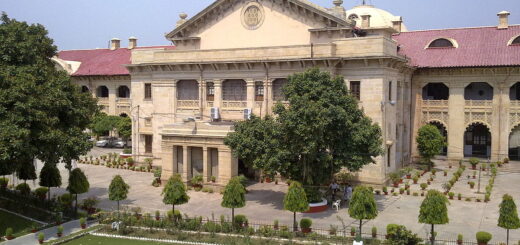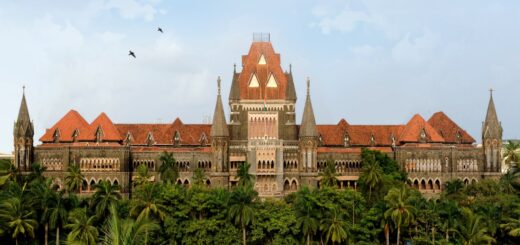Historical Background of Indian Constitution
Prior to 1947, the Indian subcontinent was characterized by a bifurcation into two principal components: British India, which encompassed 11 provinces, and the Princely States, governed by Indian monarchs under a subsidiary alliance framework. Following their amalgamation, these entities established the Indian Union; however, numerous legacy systems originating from British India continue to be observed today. The historical foundations and development of the Indian Constitution can be linked to various regulations and legislative acts enacted prior to India’s independence.
Synopsis:
- Introduction
- Constitutional Development – East India Company Rule (1773 – 1857)
- Regulating Act of 1773
- Pitt’s India Act of 1784
- Charter Act of 1813
- Charter Act of 1833
- Charter Act of 1853
- Constitutional Development – Rule under the British Crown (1857-1947)
- Government of India Act of 1858
- Indian Councils Act of 1861
- India Council Act of 1892
- Indian Councils Act of 1909
- Government of India Act of 1919
- Government of India Act of 1935
- Indian Independence Act of 1947
- Conclusion
1. Introduction:
Indian democracy operates as a parliamentary system in which the executive branch is accountable to the Parliament. The Parliament consists of two chambers: the Lok Sabha and the Rajya Sabha. Additionally, the governance structure is federal, meaning that both the central and state governments possess distinct executive and legislative bodies. Furthermore, there is a provision for self-governance at the local government level. The foundations of these systems can be traced back to the British colonial administration. An examination of the historical context of the Indian Constitution and its evolution over time is warranted.
2. Constitutional Development – East India Company Rule (1773 – 1857)
- Regulating Act of 1773
The initial action taken by the British Parliament aimed at overseeing and regulating the operations of the East India Company in India involved the appointment of the Governor of Bengal (Fort William) as the Governor-General of Bengal. Warren Hastings was appointed as the inaugural Governor-General of Bengal. An Executive Council, consisting of four members, was formed to assist the Governor-General, although no distinct legislative council was established at that time. This arrangement placed the Governors of Bombay and Madras under the authority of the Governor-General of Bengal. In 1774, the Supreme Court was established at Fort William (Calcutta), serving as the highest court of appeal. Additionally, it was mandated that company servants refrain from participating in private trade or accepting bribes from local inhabitants. The Court of Directors, which functioned as the governing body of the company, was required to report on its revenue.
- Pitt’s India Act of 1784
The differentiation between the commercial and political roles of the company is essential. The Court of Directors is responsible for overseeing commercial operations, while the Board of Control manages political matters. The composition of the Governor General’s council was diminished to three members. Furthermore, Indian affairs were placed under the direct authority of the British Government. The territories held by the company in India were referred to as “the British possession of India.” Additionally, councils for governors were instituted in both Madras and Bombay.
- Charter Act of 1813
The Company’s exclusive control over trade in India was abolished, allowing all British subjects to engage in commerce with the region.
- Charter Act of 1833
The position of Governor-General of Bengal evolved into that of the Governor-General of India. Lord William Bentinck was the inaugural holder of this office. This transition marked a significant advancement in the centralization of governance within British India. Additionally, the establishment of a Central legislature for India was initiated, as the act retracted the legislative authority previously held by the provinces of Bombay and Madras. Furthermore, the Act effectively terminated the East India Company’s operations as a commercial entity, relegating it to a purely administrative role.
- Charter Act of 1853
The functions of the Governor-General’s Council pertaining to legislation and executive authority were delineated. The Central Legislative Council comprised six members, with four of these members being appointed by the provisional governments of Madras, Bombay, Bengal, and Agra. Additionally, a system of open competition was established as the foundation for the recruitment of civil servants within the Company, thereby making the Indian Civil Service accessible to all individuals.
3. Constitutional Development – Rule under the British Crown (1857-1947)
- Government of India Act of 1858
The governance of India transitioned from the Company to the authority of the Crown. The British Crown’s powers were delegated to the Secretary of State for India, who was supported by a Council of India consisting of 15 members. This Secretary was granted comprehensive authority and oversight of Indian administration, with the Viceroy acting as his representative. The position of Governor-General was redefined as the Viceroy of India, with Lord Canning serving as the inaugural Viceroy. Additionally, the Board of Control and the Court of Directors were abolished. - Indian Councils Act of 1861
The introduction of Indian representation in institutions such as the Viceroy’s executive and legislative councils (non-official) marked a significant development. Three Indian representatives were appointed to the Legislative Council. Legislative councils were created at both central and provincial levels. The framework stipulated that the Viceroy’s Executive Council would include a number of Indians as non-official members during legislative proceedings. Additionally, it granted formal acknowledgment to the portfolio system. This initiative also commenced the process of decentralization by reinstating legislative authority to the provinces of Bombay and Madras. - India Council Act of 1892
The implementation of indirect elections through a nomination process was established. The legislative councils were expanded in size. Additionally, the scope of the Legislative Councils was broadened, granting them the authority to deliberate on the Budget and pose inquiries to the Executive. - Indian Councils Act of 1909
This legislation is commonly referred to as the Morley-Minto Reforms. It marked the initial effort to implement direct elections within legislative councils, thereby introducing a representative and popular dimension to governance. The Central Legislative Council was rebranded as the Imperial Legislative Council, and its membership expanded from 16 to 60 members. Additionally, the reforms established a framework for communal representation for Muslims by endorsing the notion of a ‘separate electorate.’ Notably, for the first time, Indians were included in the Viceroy’s executive council, with Satyendra Prasanna Sinha serving as the law member. - Government of India Act of 1919
This legislation is commonly referred to as the Montague-Chelmsford Reforms. It delineated and distinguished the Central subjects from the Provincial subjects. The concept of dual governance, termed ‘Dyarchy’, was implemented within the Provincial subjects. Under this dyarchy framework, provincial subjects were categorized into two segments: transferred and reserved. In relation to reserved subjects, the Governor was not accountable to the Legislative Council. The Act marked the introduction of bicameralism at the central level for the first time, establishing a Legislative Assembly comprising 140 members and a Legislative Council consisting of 60 members, both elected directly. Furthermore, the Act mandated that three out of the six members of the Viceroy’s Executive Council, excluding the Commander-in-Chief, were to be Indian nationals. It also provided for the creation of a Public Service Commission. - Government of India Act of 1935
The Government of India Act of 1935 aimed to create an All-India Federation that would include both the Provinces and the Princely States as constituent units; however, this proposed federation was never realized. The Act delineated the distribution of powers between the central authority and the constituent units through three distinct lists: the Federal List, the Provincial List, and the Concurrent List. The Federal List allocated 59 items to the Centre, while the Provincial List assigned 54 items to the provinces, and the Concurrent List included 36 items applicable to both levels of government. The residual powers were assigned to the Governor-General. Furthermore, the Act eliminated the Dyarchy system in the Provinces, replacing it with a framework of ‘Provincial Autonomy.’ It also allowed for the continuation of Dyarchy at the central level. Additionally, bicameralism was introduced in six of the eleven Provinces, specifically in Assam, Bengal, Bombay, Bihar, Madras, and the United Province. The Act also provided for the establishment of a Federal Court and abolished the Council of India. - Indian Independence Act of 1947
India was proclaimed an Independent and Sovereign State. Responsible governments were instituted at both the national and provincial levels. The Viceroy of India and the provincial governors were designated as the constitutional heads of their respective jurisdictions. Additionally, the Constituent Assembly was tasked with dual responsibilities—both Constituent and Legislative—and was recognized as a sovereign legislative body.
4. Conclusion
The origins of the Indian Constitution can be traced back to the establishment of the East India Company by the British. Under the governance of the East India Company, the British implemented various legislative measures and renewed their agreement with the Company every two decades. Over time, they expanded their control over India, enacting regulations that favored their interests. By the conclusion of the Company era, the British had fully subjugated India. Following the period of British Crown rule, India achieved independence. It took nearly three years after gaining independence in 1947 for the Indian Constitution to be formally adopted.



